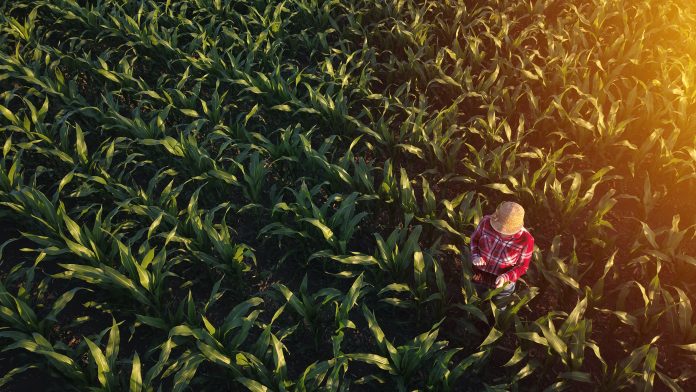Curtis R Youngs from Iowa State University, provides an analysis of global food security, in this the first part of a four-part series
Norman Borlaug, a native of Iowa U.S., is considered by many as the father of the green revolution. He is credited with saving the lives of millions of people through his development of new varieties of wheat and rice that withstood harsh growing conditions in Mexico and India, respectively. During his Nobel Laureate lecture on 11th December 1970, he stated “…the first essential component of social justice is adequate food for all mankind. Food is the moral right of all who are born into this world.” 1
Global food security has frequently made news headlines during the past two years. The SARS-CoV-2 outbreak sent shockwaves across the globe with its overpowering impact on the human healthcare system and its severe disruption of the human food supply chain. The recent invasion of Ukraine by Russian military forces caused food insecurity for many Ukrainians. The rapid, unplanned, and massive influx of Ukrainian refugees into neighbouring countries may itself lead to food insecurity in those countries that are so graciously providing humanitarian assistance to the displaced Ukrainian people.
Global food security is not a new topic
The first recorded famine occurred more than 2,460 years ago in ancient Rome2. Famines have occurred often throughout the history of humankind, and despite the cutting-edge technologies for food production that currently exist, famines are still occurring today in several places, such as Yemen, South Sudan, Ethiopia and Madagascar2. The past and present famines have resulted from naturally-occurring causes (e.g., drought and flooding), as well as human-induced causes (e.g., war, social discrimination).
What lessons have been learned from these famines? Widespread food shortages result in hunger and malnutrition, stunting of child development, human deaths, disease outbreaks, social instability, overthrowing of governmental regimes, massive migration of people, and/or immoral human behaviour. Clearly, major efforts must be made to combat food insecurity to reduce, and hopefully eliminate, the adverse consequences associated with a lack of food availability to all peoples of the world. The needed efforts are perhaps best exemplified by the 2030 Agenda for Sustainable Development, which highlights the United Nations’ 17 Sustainable Development Goals3. Goal number 2 is “zero hunger”.
The Food and Agriculture Organization of the United Nations states that food security (the opposite of food insecurity) exists when “all people at all times have physical, social and economic access to sufficient, safe, nutritious food that meets their dietary needs and food preferences for an active and healthy life.”4 This comprehensive definition points out the complexities and challenges associated with the attainment of food security (and hence, the cessation of global food insecurity).
Numerous projections have been made regarding the population of humans expected to inhabit planet earth in the future.5 Estimates have ranged from a peak of 9.7 billion people in the year 2064 to a peak of 9.7 billion in the year 2070, to a peak of 11 billion in the year 2100. These population estimates vary due to difficulties in forecasting human birth rates, human death rates, advances in medicine that prolong lifespan and a myriad of other factors. The Population Reference Bureau estimated nearly 9.9 billion inhabitants will be on earth in the year 2050.6 Looking back over the past 50 years, it can be seen that it took 13 years (1974 to 1987) to go from a population of 4 billion to 5 billion people, 12 years (1987 to 1999) to go from 5 to 6 billion people, and 13 years (1999 to 2013) to go from 6 to 7 billion people on the planet. Irrespective of whose population estimate turns out to be most accurate, feeding the large human population that will exist in the year 2050 will require substantial changes in the production, processing, storage and distribution of food if widespread food insecurity is to be thwarted.
Supply chain vulnerabilities
Vulnerabilities in the supply chain for human food were exposed during the SARS-CoV-2 outbreak. The supply chain for human food is composed of a serial assembly of processes and procedures, somewhat analogous to a metal chain that is comprised of a serial assembly of pieces of metal called links. The metal chain is said to be only as strong as its weakest length; similarly, the strength of the supply chain for human food is only as strong as its weakest link.
Examination of the various pieces of the supply chain for human food will undoubtedly reveal not only opportunities for strengthening of the supply chain for human food, but also identification of weaknesses/vulnerabilities within that supply chain.
Human food comes from nature, whether it is native food harvested from the sea or land or food that comes from the cultivation of natural resources under the stewardship of humankind. In many places of the world, fisherwomen and fishermen capture human food from native stocks in the wild. In other areas, however, aquaculturalists cultivate native and selectively bred aquatic species for human food in both naturally occurring and human-made bodies of water. Similarly, some sources of human food are harvested from the land that is native (e.g., wild strawberries, wild rabbits) or cultivated (e.g., wheat, goats). Collectively, we can consider these foods as “raw foods”.
These raw foods are at the top of the supply chain for human food. Many people believe the most important tool to battle global food insecurity is to increase the volume of raw foods produced. However, there are numerous other parts of the supply chain for human food that can be enhanced in society’s quest to attain global food security. There are potential losses of food that occur all along the supply chain for human food. For example, not all raw products are destined for human food. Not all raw products intended for human food are edible. Losses of potential foods occur before harvest and after harvest. Some potential food sources are lost during food processing procedures and during transport to the marketplace. Some foods “expire” before they are purchased, and others are wasted by the consumer (household level).
All links of the supply chain for human food have weaknesses, and we must simultaneously address these weaknesses to combat hunger/malnutrition and to feed the world’s rapidly growing human population.
References
- Rambøl IB. 2020. Cultivating peace. www.nobelpeacecenter.org/en/news/cultivating-peace
- Wikipedia. 2022. List of famines. https://en.wikipedia.org/wiki/List_of_famines
- United Nations Department of Economic and Social Affairs. 2022. Sustainable development: The 17 goals. https://sdgs.un.org/goals
- FAO, IFAD, UNICEF, WFP and WHO. 2021. The State of Food Security and Nutrition in the World 2021. Transforming food systems for food security, improved nutrition and affordable healthy diets for all. Rome, FAO. https://doi.org/10.4060/cb4474en
- Adan, D 2021. How far will global population rise? Nature, Volume 597, 23 September, pages 462-465.
- Population Reference Bureau. 2020. 2020 World Population Data Sheet, https://interactives.prb.org/2020-wpds/download/
Please note: This is a commercial profile











